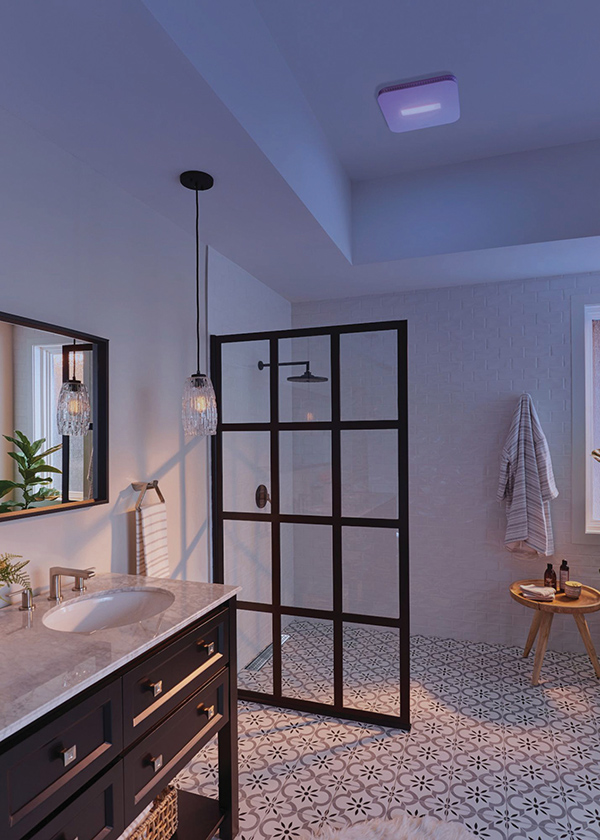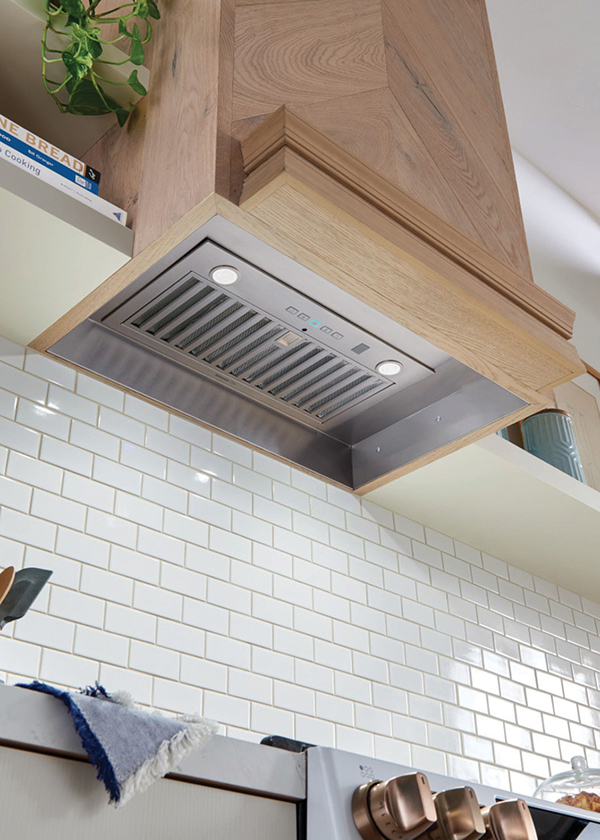

Improve Your Home’s Air Quality
The COVID-19 pandemic continues to change the way people spend time in their homes. From work to working out, more out-of-the-house activities have moved to the home.
In fact, according to the 2021 American Time Use Survey, 38% of employed people did some or all of their work from home. That means better indoor air quality at home is as important as ever.
According to the Environmental Protection Agency, indoor air quality can be up to five times worse than outdoor air quality. With the average person taking about 22,000 breaths per day, installing smarter indoor air quality technology is key to healthier living year-round.
Improving your home’s air quality begins with recognizing what contributes to poor indoor air quality, the potentially harmful effects and how to address these problems.
Off-gassing
 Off-gassing from construction materials, carpeting, adhesives and synthetic materials, as well as solvents from common household cleaners, can accumulate in even well-constructed homes. Continuous ventilation solutions can help reduce the harmful effects of off-gassing, such as headaches, nausea and irritation in your eyes, nose and throat.
Off-gassing from construction materials, carpeting, adhesives and synthetic materials, as well as solvents from common household cleaners, can accumulate in even well-constructed homes. Continuous ventilation solutions can help reduce the harmful effects of off-gassing, such as headaches, nausea and irritation in your eyes, nose and throat.
Simple smart ventilation fans and good ventilation can help control off-gassing in your home. Other options for reducing the impact of off-gassing include shopping for products designed for low or no volatile organic compound emission and adding houseplants that naturally help filter and purify the air, though houseplants only offer a small amount of help.
Moisture
Moisture that is not properly ventilated can cause mildew and mold formation, which can potentially lead to structural problems and health issues. For most homes, the optimal humidity balance is 40-60%, but those levels can be hard to maintain in high-humidity spaces like bathrooms.
Antimicrobial light technology combined with powerful ventilation offers effective protection against bacteria, mold and fungi growth in your home. An option like the Broan SurfaceShield LED Exhaust Fan kills viruses and prevents mold, bacteria and fungi growth on surfaces in your bathroom or other humidity-prone environments. Featuring two lighting modes, an everyday white light perfect for task lighting and a continuous antimicrobial mode, the cover is also designed to stay cleaner longer with less louvers in which dust and dirt can get trapped.
Cooking effluents
Cooking effluents from food preparation can infiltrate the whole house in minutes. Grease, oils and aromas settle permanently into carpet, furniture, clothing and other surfaces. Kitchen ventilation solutions can help eliminate cooking effluents for a cleaner, more comfortable and healthier environment.
For example, the Broan Elite 21-Inch Custom Range Hood Power Pack offers a custom appearance while protecting cabinetry with stainless steel liners. Bright LED lighting enhances your cooking experience while the four-speed, back-lit, soft touch control and WiFi connectivity enabling voice control makes operating the hood easy. Automatic infrared sensing allows your range hood to adjust the speed of your fan based on your cooking style.
Pollutants
 Stemming from sources like space heaters, gas stoves, woodstoves, indoor furnaces, dryers and fireplaces, combustion pollutants are gases or particles that come from burning materials. Examples include carbon monoxide – causing headaches, dizziness, disorientation, nausea and fatigue – and nitrogen dioxide – causing eye, nose and throat irritation; impaired lung function; and increased respiratory infections.
Stemming from sources like space heaters, gas stoves, woodstoves, indoor furnaces, dryers and fireplaces, combustion pollutants are gases or particles that come from burning materials. Examples include carbon monoxide – causing headaches, dizziness, disorientation, nausea and fatigue – and nitrogen dioxide – causing eye, nose and throat irritation; impaired lung function; and increased respiratory infections.
When possible use appliances that vent to the outside, ventilate rooms where fuel-burning appliances are in use and ensure these appliances are properly installed, used, adjusted and maintained.
Explore more ideas for improving air quality in your home at broan-nutone.com.
Common Household Air Offenders
Understanding and controlling some of the common pollutants found in homes, schools and offices may help improve your indoor air and reduce your family’s risk of health concerns related to indoor air quality.
Radon, a radioactive gas that forms in soil, enters your home by seeping through cracks and gaps in floors and walls touching the ground.
Secondhand smoke comes from burning tobacco products.
Combustion pollutants are created when certain materials are burned in appliances that are poorly vented, such as space heaters, stoves, water heaters, dryers and fireplaces. Common examples are carbon monoxide and nitrogen dioxide, which are both colorless, odorless gasses that can be difficult to identify.
Volatile organic compounds can be found in numerous household products like paints and lacquers, paint strippers, cleaning supplies, varnishes and waxes, pesticides, building materials and furnishings, office equipment, moth repellents, air fresheners and dry-cleaned clothing.
Asthma triggers vary depending on the person and what causes their asthma to flare, but common examples include mold, dust mites, secondhand smoke and pet dander, as well as certain foods and air pollutants.
Molds are living organisms that produce spores, which transfer through the air before resting on damp surfaces and growing.
Photo courtesy of Getty Images (couple on couch)Broan-NuTone







